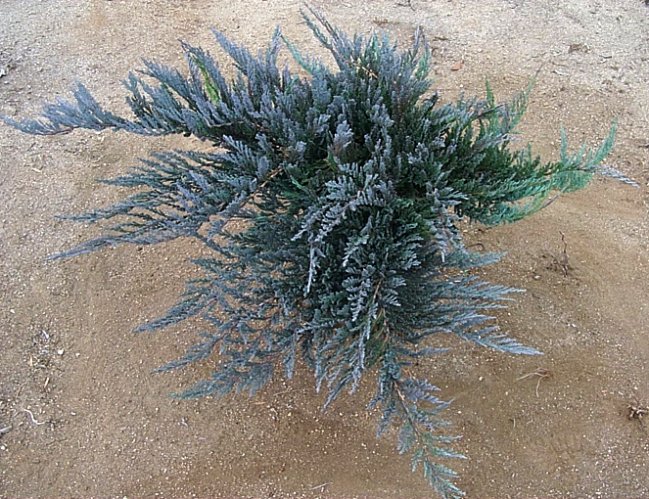| Botanical Name: Juniperus horzontalis 'Bar Harbor' | |
| Common Name: Bar Harbor Juniper |

-
Anatomy
-
Culture
-
Design
Plant Type
Conifer, Ground cover
Height Range
Under 1'
Flower Color
n/a
Flower Season
n/a
Leaf Color
Blue Green
Bark Color
Grey
Fruit Color
n/a
Fruit Season
n/a
Sun
Full, Half
Water
Low
Growth Rate
Moderate
Soil Type
Sandy, Clay, Loam, Rocky, Unparticular
Soil Condition
Average, Rich, Poor, Well-drained, Dry
Soil pH
Acid, Neutral, Basic
Adverse Factors
n/a
Design Styles
Formal, Japanese, Mediterranean, Ranch
Accenting Features
n/a
Seasonal Interest
Winter, Fall
Location Uses
Entry, Shrub Border, Foundation, Parking Strip, Patio, With Rocks
Special Uses
Cascade, Filler, Mass Planting
Attracts Wildlife
n/a
Information by: Stephanie Duer
Photographer: Norman's Nursery
Photographer: Norman's Nursery
-
Description
-
Notes
Bar Harbor Juniper is an attractive low growing evergreen with bluish-green feathery scales. Usually grows less than 1 foot high, but spreads 6 to 8, making it well suited as a ground cover. In the winter, foliage may turn reddish purple.
Grow in any soil that is well draining, including sandy, gravelly, or clay soils, but they must be well draining. Best growth in full sun. Once established, it tolerates dry soils and heat. Avoid shearing, as that will made the juniper woody and stiff; instead, prune selectively if necessary (see Guides).